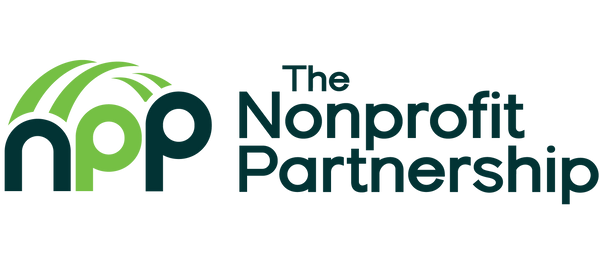
The Nonprofit Partnership has launched the Nonprofit Diversity, Equity and Inclusion Pledge in order to encourage the sector to move proactively towards implementing DEI practices within nonprofit organizational structures.
For some organizations, this can seem like an overwhelming task. Nonprofits are stretched thin. Many, especially because of COVID-19 and the economic downturn, feel like they’re struggling just to keep the lights on. But the fact is, creating a culture that supports DEI does not have to be burdensome and should be part of your everyday work. Managing an organization using best practices should not be onerous, and is actually an asset to an organization’s ability to effectively weather storms such as COVID-19.
This leads us to how an organization can build an organizational culture that embraces DEI: through effective management of human resources. Good practices not only help the organization in the DEI realm, but they also lend themselves to building of a positive culture in general.
The Pledge that we have launched categorize these practices into the following areas:
Training
DEI training is readily available for nonprofits of all sizes. Members of The Nonprofit Partnership have the ability to partake in the trainings that we offer. If you are not a member of NPP, trainings can be found, at little to no-cost, through other networks or via online opportunities. Trainings are plentiful and there is no reason for staff and others within the organization not to participate in such trainings. The key here is for it to be intentional. Leaders within organizations can and should make an investment of time, and financial resources if necessary. Leaders need to find the resources that are available to their organizations and make sure that staff and others can participate in those activities.
Conversations
A key to building a culture that values DEI is to be intentional about having conversations related to the issue. We often have difficult conversations in the nonprofit sector around issues such as programs, budgeting, staffing, and governance. Part of being in a workforce, and leading a workforce, is to have challenging conversations. Conversations that are based on respect and openness. Setting time aside at staff or Board meetings to have those discussions is a great start. You don’t need a DEI expert to do that. If you have access to such an expert, great! If not, start somewhere. “Perfect is the enemy of good” is a great way of looking at this issue. Don’t wait to have these conversations until you feel you are perfectly capable of having them.
Research
There is so much information available to organizations these days that we shouldn’t have an issue collecting that information to help inform our DEI efforts. Certainly, understanding the make-up of your staff, volunteers, and Board is a fairly simple thing to do and necessary for effective management, not just in the diversity realm. Once that understanding exists, using that information to have discussions and creating strategy around DEI is a simple and easy outgrowth.
Understanding external demographics is slightly more involved but again, necessary for good management. Knowing the make-up of your clientele, donors, community, state, and nation helps to inform all the decisions you make. It also helps you understand how responsive you are in the DEI realm.
Additionally, as you develop fair and equitable hiring and compensation practices within your organization, you need to understand what competitive compensation looks like within the sector. Researching and monitoring compensation in the sector is not a burdensome task and the information is often readily available due to the transparent nature of the sector. For those who are members of NPP, we have much of that information at hand or can help find it. Understanding what fair, competitive compensation looks like is the first step. Ensuring that the compensation within the organization is fair and equitable is the next step, and key to embracing DEI. Evaluate your internal structures as measured against your internal demographics. Addressing disparities along the lines of race, gender, or any other category is necessary for effective DEI management. And it’s necessary for ensuring a positive and healthy organizational structure.
Processes
Best practices in the hiring and retention of your staff can not only help you manage a more effective organization, but also advance DEI practices.
When hiring staff, there are some basic strategies to pursue—or not pursue. Once you have an understanding of the make-up of your organization and what kind of diversity you require, you need to implement hiring practices that follow best practice in the DEI realm. Being intentional about recruiting individuals from a wide pool is important. Don’t just rely on your usual sphere of influence. Be thoughtful and creative in your communications.
Once you have cast the wide net, resist practices that encourage inequity. Practices like asking for a salary history, not including a salary range, or requiring educational attainment that is not necessary for the position all lead to inequitable practices. (A future blog post will go into further detail about these issues.)
Once you have that diverse staff on board, focus on building practices that encourage their retention and advancement. Invest in the professional development of diverse people you’d like to retain and advance in your organization. Implement performance review practices that are fair across the board. Conduct annual reviews using consistent measurement rubrics and work with staff on self-improvement. These activities are good for all staff, and frankly should already be happening. Additionally, such practices encourage a more diverse, equitable and inclusive organization.
Perhaps the key point in this message is that implementing DEI practices is often nothing more than ensuring you are adhering to the basic fundamentals of good management. Investing in training and professional development is a good management practice. Having challenging conversations within your organization is a good management practice. Researching and understanding the make-up of your stakeholders and the marketplace is a good management practice. Constructing professional recruitment, retention and performance evaluation processes is a good management practice.
Building a culture that embraces diversity, equity and inclusion is not an unnatural process but instead is a result of following time-tested best practices in running an organization.

